American Bulldog Progression: Growth Chart, Milestones, and Training Tips
Are you considering welcoming an American bulldog into your home? Then you’ll probably want to know how they progress and grow over the years — especially considering that they are pretty large dogs.
In this guide, we’ll help you understand what growth milestones to watch out for, as well as how you can care for your American bulldog at different development stages.
American Bulldog Summary
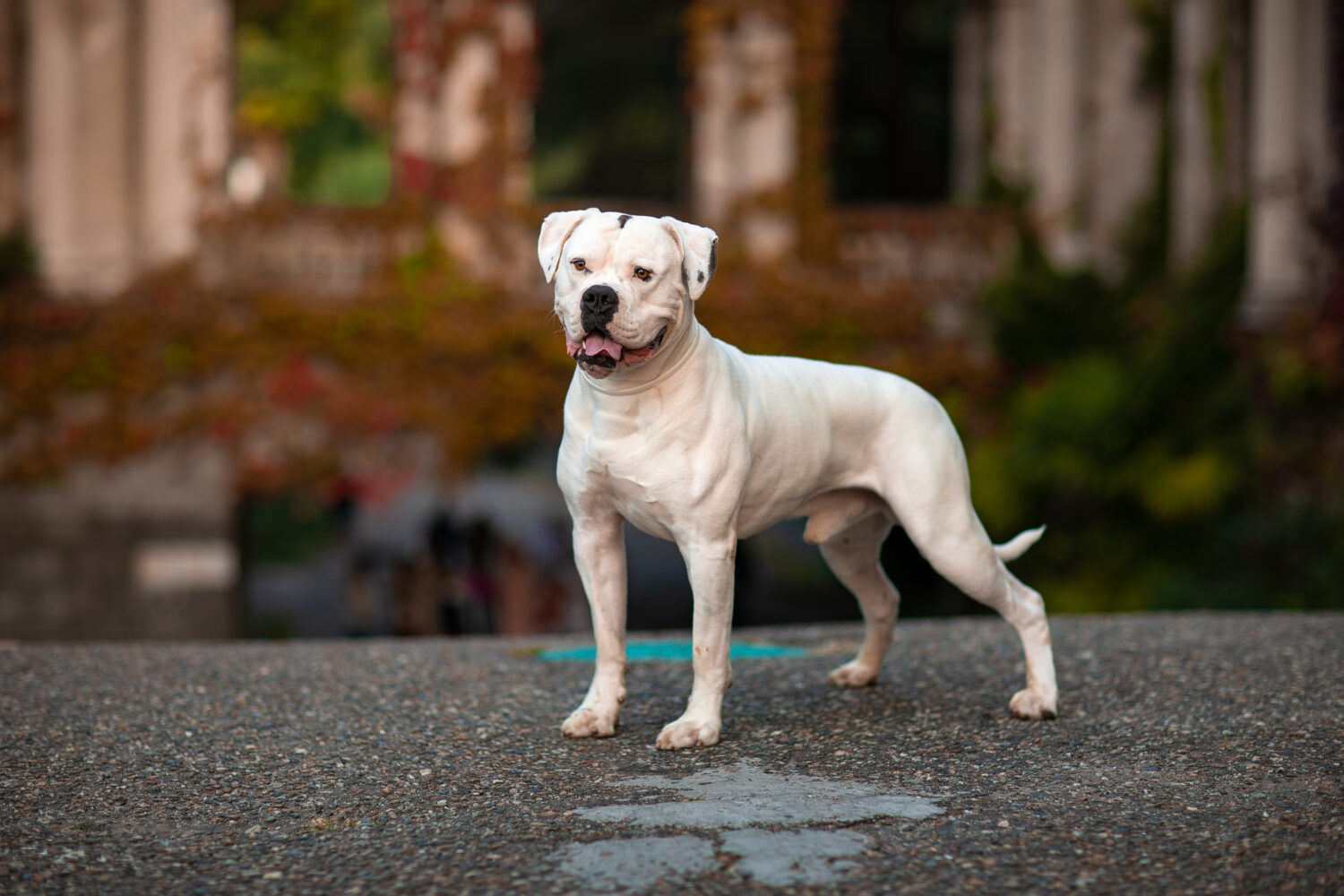
©Golland/Shutterstock.com
American bulldogs are a medium-large breed originally used for working on farms and ranches. They are assertive, loyal, friendly, energetic, and generally great with children. Also, they are typically stronger and taller than their British counterparts, so they can run faster and jump higher.
Today, we differentiate between two types of American bulldogs:
- The Johnson type, or the “classic” American bulldog, has a wider head, more prominent wrinkles, and is generally larger.
- The Scott type, or the “standard” American bulldog, is smaller and more athletic.
American Bulldog Growth and Weight Chart by Age
The chart below shows the average weight range for American bulldogs at different ages. It should give you a general idea of what you can expect. However, it’s completely normal if your dog is slightly heavier or lighter.
Also, keep in mind that male American bulldogs are generally heavier (and taller) than females.
| 3 Months | 25-42.5 lbs |
| 4 Months | 31-58.5 lbs |
| 5 Months | 38.5-67 lbs |
| 6 Months | 47-77.5 lbs |
| 7 Months | 52-88 lbs |
| 8 Months | 56-96.5 lbs |
| 9 Months | 59.5-102.5 lbs |
| 10 Months | 62-108 lbs |
| 11 Months | 62.5-113 lbs |
| 12 Months | 64-117 lbs |
| 2 years | 64-130 lbs |
When Will My American Bulldog Stop Growing?
American bulldogs typically stop growing between one and two years of age, but some dogs may continue growing even after that. We always recommend tracking your puppy’s monthly progress to ensure they’re growing at a healthy rate. You can also ask your vet to help you do that if you’re not 100% sure of your own estimate.
Either way, it’s best to take an adult dog for a regular vet check-up at least once a year. You should go more often when they’re still a puppy and when they reach their golden years.
- American bulldogs are considered puppies until they turn two.
- They are considered to be senior dogs from the age of seven.
Remember that food and feeding frequency can affect your dog’s development, too.
Puppies not older than four months need to eat larger portions compared to adult dogs, and be fed more often, too — precisely four times a day. In most cases, you’ll want to divide three to four cups of puppy food into four meals. However, you should always check the instructions on the food packaging as well.
Once your puppy gets a bit older (between four and six months old), you should start decreasing the portions and the feeding frequency. Generally, you’ll need to go from four to three feedings a day.
Finally, when your puppy is six months old, you should start feeding them only twice a day.
How Big Will My American Bulldog Be When It’s Fully Grown?
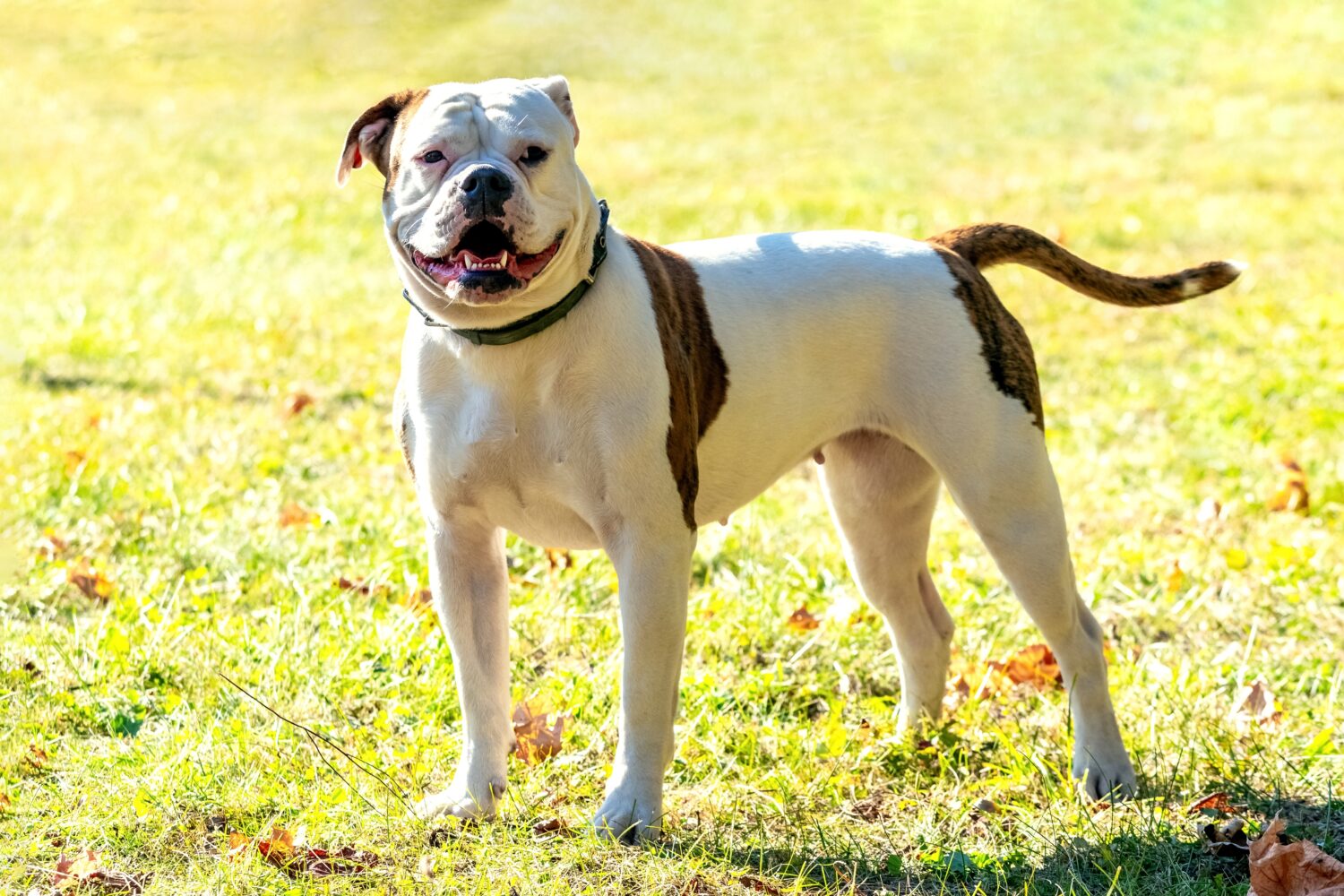
©MVolodymyr/Shutterstock.com
As mentioned, male American bulldogs are typically heavier and taller than females.
The average male will weigh between 66 to 130 pounds and stand between 20 and 28 inches tall. Females will usually weigh between 60 and 90 pounds and typically reach between 20 and 24 inches in height.
Keep in mind, of course, that the exact height and weight of your dog can highly depend on their genetics, diet, and even feeding frequency.
For example, giving your pup too much food at once can lead to weight gain. This is especially true for American bulldogs, as they’re not exactly known for self-regulating their meals.
When Should My American Bulldog Be Spayed or Neutered?
While it’s generally recommended to spay or neuter pups while they’re only a few months old, the same rule may not necessarily apply to American bulldogs.
Larger breeds may need to be spayed or neutered when they’re a bit older because they take longer to fully develop. With that in mind, you may want to consider waiting until your pup is near or over nine to 15 months of age. However, it’s always best to consult a vet on this matter; preferably, one who already knows your dog well.
Apart from that, spaying and neutering can be beneficial for both dogs and owners. It can prevent some types of cancer, as well as unwanted behavior in both males and females. In females, it will prevent bloody vaginal discharge and erratic behavior; in males, it will prevent behaviors such as marking inside your home or getting into fights with other male dogs.
When Should My American Bulldog Be House Broken?
You should start potty training your pup when they’re between eight and 12 weeks of age. However, keep in mind that housebreaking can take anywhere from four to six months, so don’t expect your pup to immediately get the hang of things.
Consistency and patience are key when house training any dog, and American bulldogs are no exception. If accidents do happen — and it’s likely that they will — stay calm and simply clean the soiled area. Focus on giving your puppy praise when they get it right, not punishing them when they get it wrong.
Also, make sure to take your puppy to the designated area every hour or so. You can use verbal cues like “go potty” to help them understand what you want them to do. Finally, give them lots of praise when they actually do their business at a desired spot.
When Should My American Bulldog Stop Eating Puppy Food?
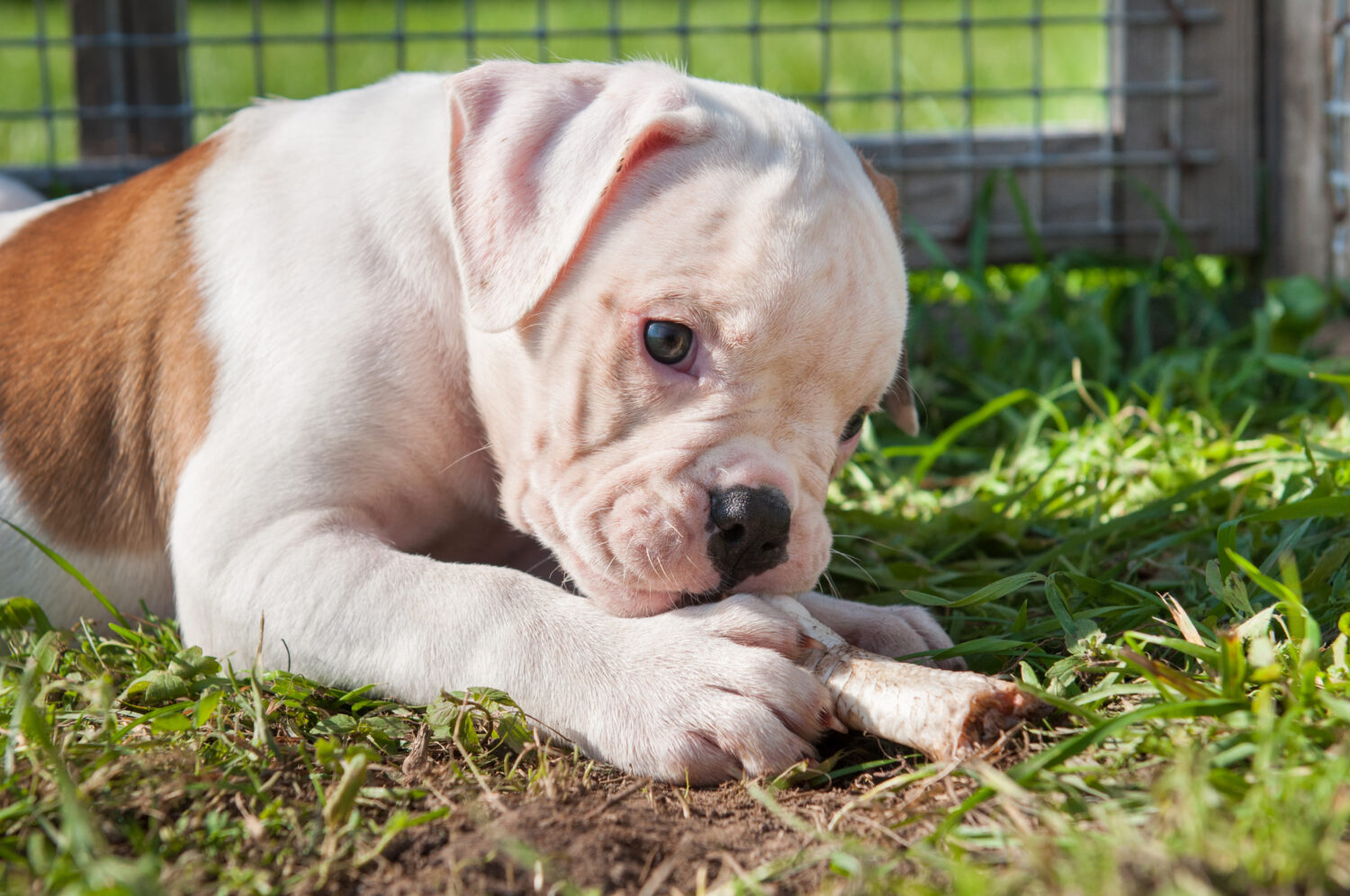
©Zanna Pesnina/Shutterstock.com
American bulldogs should stop eating puppy food when they’re near or slightly over six months of age. Remember that you should also stop feeding them as frequently; two meals a day should be enough for your pup at this stage.
Also, keep in mind that switching too early or too late to adult food can impact your pup’s growth and development. If you’re unsure when to exactly “pull the trigger,” you can always consult your vet. They should be able to provide advice tailored to your dog and their current progress.
They can also recommend food based on your dog’s specific needs. However, many dog owners are happy with the Blue Buffalo Life Protection Formula. It is made for large-breed adult dogs and contains chicken and brown rice. You can find the feeding recommendations on the official website.
When Will My American Bulldog Start Losing Teeth?
Bulldogs in general start losing baby teeth at around 12 weeks of age. This is also when your pup will start growing their adult, permanent teeth. This process is known as teething, and it should stop at about six to seven months of age.
Teething can be quite painful for dogs, so don’t be surprised if your pup starts excessively chewing at different objects during this period to ease the discomfort. If you want to prevent your things from getting chewed and destroyed, make sure to equip your dog with viable alternatives, such as specialized chewing toys.
You also want to start training your pup from an early age to prevent such undesirable behaviors.
When Should I Start Training My American Bulldog?
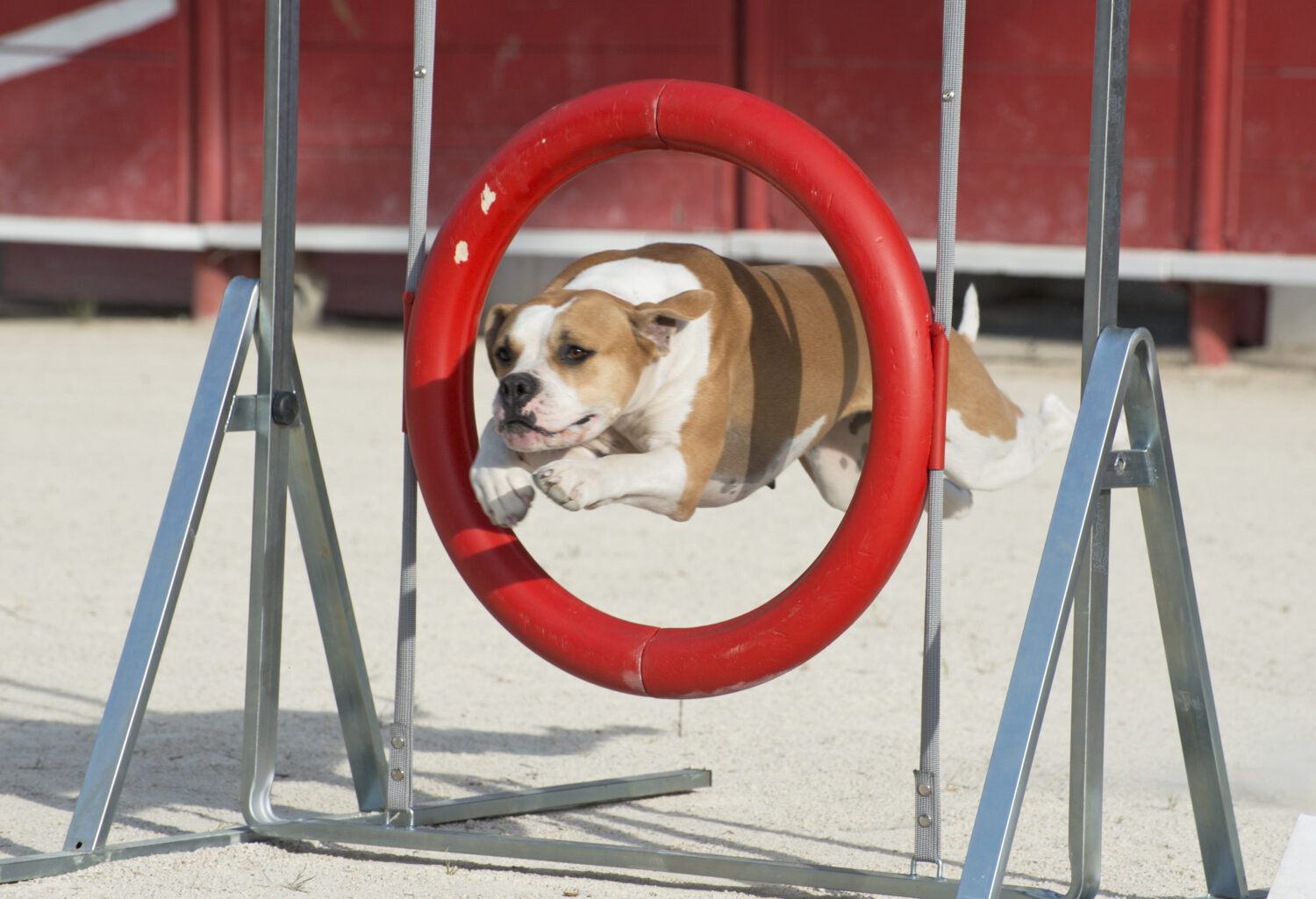
©cynoclub/Shutterstock.com
You should start training your American bulldog while they’re still a puppy. The sooner you start, the better, but keep in mind that young pups won’t be able to follow complex commands — nor stay focused for too long.
With that said, you should generally start training an American bulldog at about eight weeks of age. Stick to simpler training, such as potty training, leash training, teaching them what and what not to chew, and how to properly interact with other dogs. You can also start getting them accustomed to grooming at this stage.
When your pup is near or just over six months of age, you can start introducing simple commands. Finally, once your pup reaches one year of age, you can start engaging them in more complex training, such as obedience or agility training.
All in all, starting early can help instill good long-term habits in your pup and prevent behavior issues down the line. However, it’s equally important to know how to train them, as there’s no one approach that works with all breeds.
American bulldogs can be very stubborn and strong-willed, so you want to make training a positive experience for them; one they will actually want to participate in. Also, you should opt for shorter training sessions if possible so as not to overwhelm them.
What Commands Should I Teach My American Bulldog First?
According to the American Kennel Club (AKC), you should first teach your American bulldog the following simple commands:
- “Sit.”
- “Stay.”
- “Leave it.”
- “Drop it.”
The fourth, “Drop It” command is important because American bulldogs have a strong grip. Teaching it to your dog can help you prevent them from chewing off-limits objects, eating discarded food during walks, or potentially even harming other dogs or people.
AKC also recommends that you use the “trade up” technique for this command. In a nutshell, you want to offer your pup something better than what they’re already chewing. For example, if they’re chewing your shoes, offer them a tasty treat instead. Make sure to actually say the command while doing so.
Finally, remember that positive reinforcement is the best way to train any dog, so commend your pup whenever they get something right. You can also pet them, give them a treat, play with their favorite toy, take them to the dog park… the possibilities are endless!
When Will My American Bulldog Calm Down?
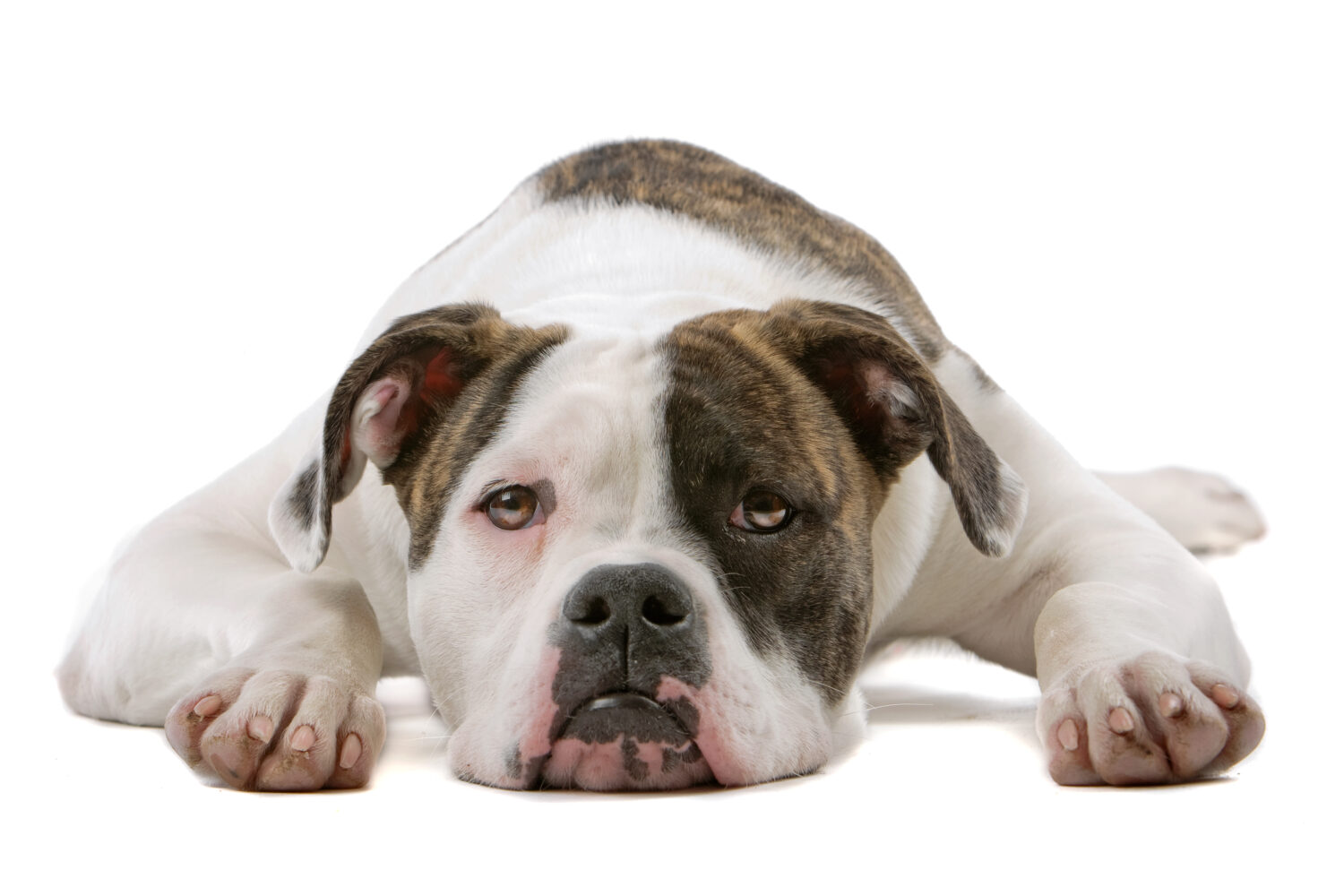
©Erik Lam/Shutterstock.com
American bulldogs are very energetic, so they’ll typically start calming down only around four or five years of age. However, this can vary depending on the individual dog and a number of lifestyle factors.
Socialization and consistent training, especially obedience classes, can do wonders for this breed. You also want to give them plenty of opportunities for exercise and physical activity. This can be particularly important during the puppy and adolescent phases when they’re more prone to destructive and attention-seeking behaviors.
Common Health Issues Your American Bulldog Might Experience
American bulldogs are a semi-healthy breed. It’s important that you’re aware of potential health issues before you decide to welcome them into your home. Consider whether you have the budget for potential treatments they may need over the years, especially as they age.
Common health issues with this breed include:
- Breathing issues: Breathing problems are common with all brachycephalic dogs (dogs with short, condensed snouts), and American bulldogs are unfortunately no exception.
- Elbow and hip dysplasia: These conditions are common in many large breeds, and can lead to pain or even arthritis.
- Hypothyroidism
- Eye problems
- Dental issues
- Obesity
Regular vet check-ups, a healthy lifestyle, and proper care are the best prevention for most of these issues.
Pictures of American Bulldog as Puppies
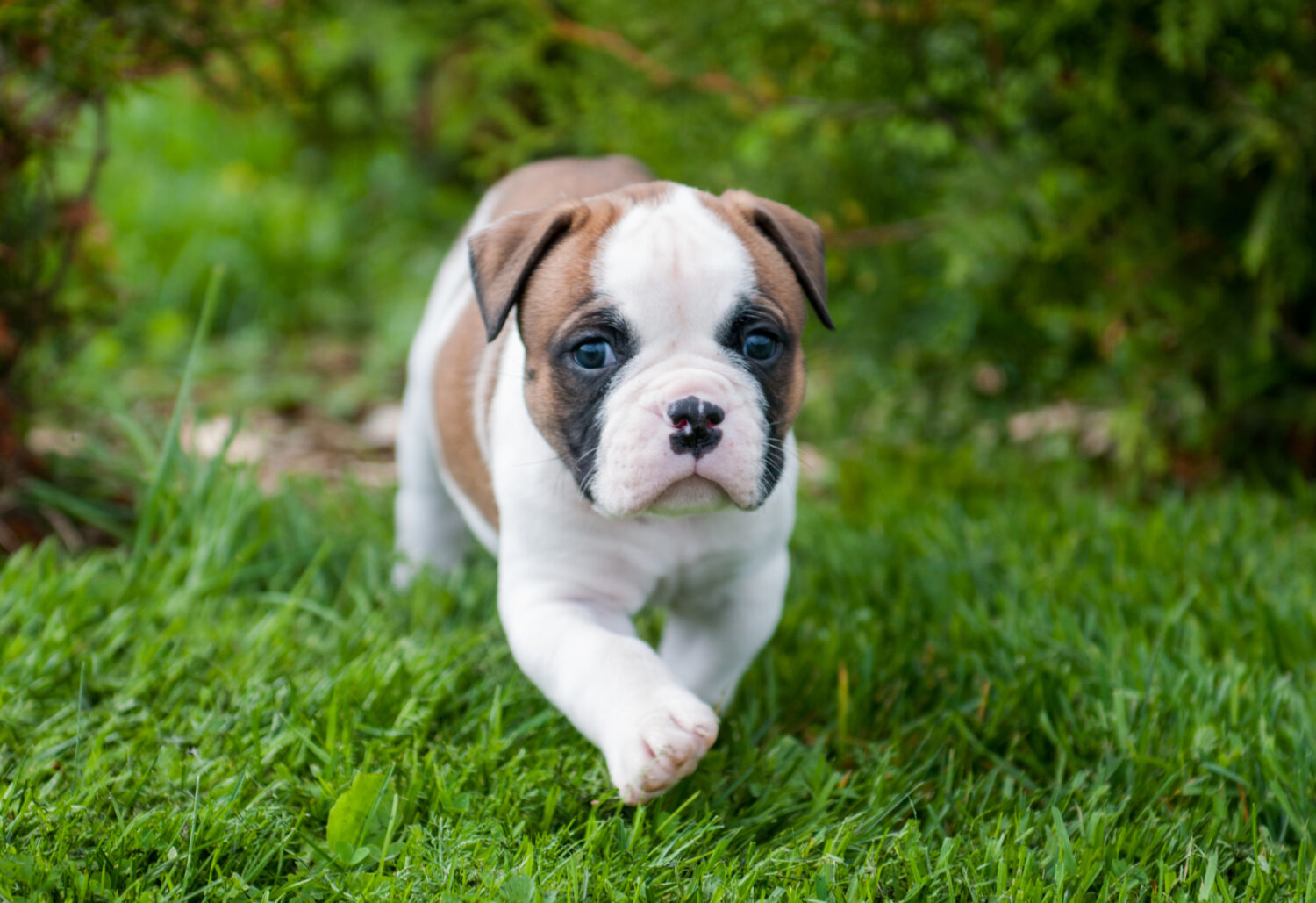
©Zanna Pesnina/Shutterstock.com
Pictures of American Bulldog at 6 Months
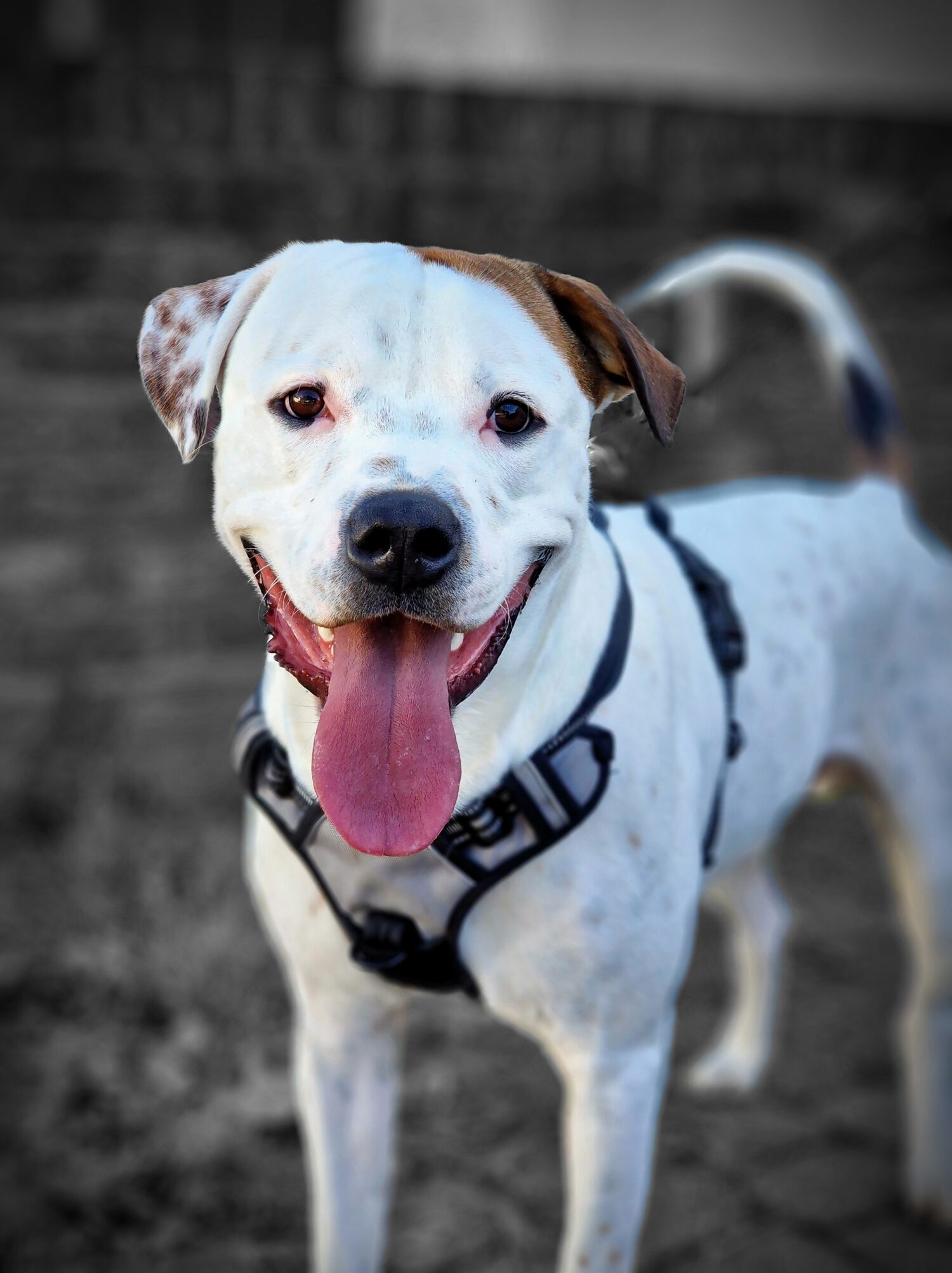
©OptimumCanine/Shutterstock.com
Pictures of Fully Grown American Bulldog
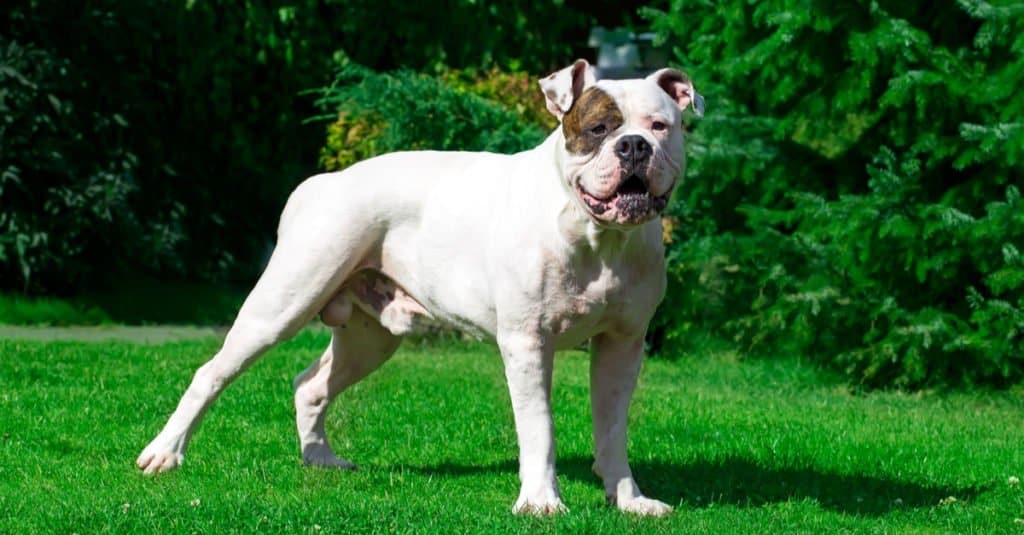
©Little Moon/Shutterstock.com
Other Dog Breeds Similar to American Bulldog
If you’re not sure that the American bulldog would be the right fit for you and your family, you may want to consider some slightly different, yet similar dog breeds, such as:
- English bulldog
- Boxer
- American pit bull terrier









